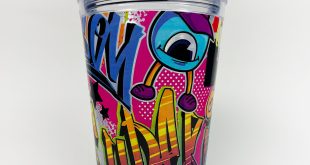
Today, football is a global phenomenon that connects people like never before, and the humble football shirt is an age-old symbol of this shared passion. Jeremy Bauer, global commercial director, Embelex at Avery Dennison RBIS, reports on how personalised merch is taking sports fandom local and global.
The football apparel market is set to grow, with analysts predicting an increase of USD$2.62 billion from 2020 to 2025, at a CAGR of 4.97%, the colossal football shirt industry is set to boom.
For FIFA World Cup Qatar 2022, every team bar Canada wore a new kit design, stimulating huge demand for branded replica shirts. Japan, Brazil, France and many others revealed amazing shirt designs that proved popular with fans. Interestingly, only six World Cup football teams were not supplied by Adidas, Nike or Puma. Needless to say, this is big business for the leading sportswear brands.
Heat transfer personalisation made easy
World Cup merch was a standout opportunity for football shirt retailers and online vendors who offer personalised printing services. Specialist embellishment providers need the latest technology to keep up with the rising demand for printed images, names and logos on kits, and related merchandise.
Thanks to software and high-precision, high-speed production processes, it’s become easier for independent stores, clubs and organisations to offer personalised clothing and accessories quickly and cost-effectively, on site. On-demand production through semi-automation and downloadable software that high-tech innovators provide are enabling new business models to reach local markets. Thanks to the affordability of the latest heat transfer application software and hardware, smaller firms can easily set themselves up to print football shirts, on-demand, no matter where in the world they’re located.
Larger retailers will use an external supplier to manage high volumes of printed and personalised sportswear for a global customer base. In this case, it will help to team with a supplier with access to global distribution centres, for the necessary stock to be supplied on a just-in-time basis, cutting waste and lost revenues to a minimum.
Full-service, on-product branding and customisation, such as that provided by Avery Dennison’s Embelex operation, can guarantee speed, agility and large enough centres strategically placed around the globe, to personalise garments at scale. With customisation and personalisation now such an integral part of sports fandom, we’ve seen interest in these services escalate in recent years.
Personalising the experience through ‘connected’ garments
The Internet of Things (IoT) takes sports fandom and apparel to a whole new level as garments can now be directly connected to online content. Through scannable smart heat transfers and QR codes on garments, embellishments and packaging, consumers can open apps on their smart phones and access rich sources of information simply by scanning these digital triggers.
Sporting events on the scale of the NFL Super Bowl, the UEFA Women’s Euros, and the FIFA World Cup present an ideal opportunity for sports marketing and fan base-building in this way. It’s an interesting proposition for teams, their fans, replica shirt manufacturers and print providers alike.
The aim is to enhance people’s experiences while offering teams new ways to tailor experiences and target specific consumers. Even at a grassroots level – local football teams and athletics clubs – smart technology attached to textiles can help build engagement by providing online information and incentives to participants through the physical kits they buy and wear. Smart shirts can enable fans to access online competitions for tickets, video content, social media fan base discussions, and much more.
Fighting the football kit fakes
Digital triggers, which effectively give the shirt owner access to a ‘digital twin’ of their garment, can also help to eliminate fakes, as authenticity is proven through the tech which can link fans to legitimate URLs of kit producing brands and teams. Counterfeit garments are a major challenge for the global football apparel market, so this is a big plus for consumers and retailers alike. Digital twin technology is also helping manufacturers and retailers manage their supply chains more efficiently and introduce sustainable models to prolong the life of garments.
Gianni Infantino, the president of FIFA, estimated that five billion people around the world watched the 2022 World Cup, with many of those viewers enjoying matches through digital devices. I believe harnessing Digital ID technology will provide a better experience for these fans and will provide a doorway into a new world of sports marketing where fans are brought ever closer to the teams, players and tournaments they love. Best of all, they can be anywhere in the world to benefit.
A high-tech future for sports kits
Sportswear has evolved to become more than just apparel, building social bridges between global sports fans and creating a worldwide ecosystem of loyal supporters. The latest embellishment technology has helped to make this journey easier by facilitating the production capabilities needed to meet high demands. Digital innovations in heat transfer technology have formed the cherry on top for team sports apparel by enhancing fan experiences.
As technology continues to evolve, we could see more exciting digital experiences and greater customisation and personalisation capabilities emerge, further strengthening the undying connection between sports fans and teams.
 Printwear & Promotion The Total Promotional Package
Printwear & Promotion The Total Promotional Package




